Olympus used to offered only
two lens options at 200mm focal length during the mid seventies. The E-Zuiko
Auto-T 200mm f/4.0 was still around with little changes in its optical
composition but an even slower F-Zuiko Auto-T 200mm f/5.0 has been
discontinued for quite a while. By early part of '80, I have noticed the Zuiko
lens series already had a 180mm f/2.8 but the high speed Zuiko 180mm f2.0 ED
IF was only introduced some time around the late '80 or the early '90.
¡¡
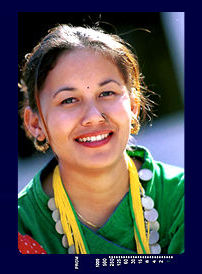 |
That was also the rough timing where Olympus turned aggressive for quite a while, causing many eyebrows raised by introducing a series of exciting high speed optics such as the ED glass Zuiko 100mm f2.0, Zuiko 250mm f2.0 ED-IF, Zuiko 350mm f/2.8 ED-IF etc. and a few notable SLR bodies such as OM3Ti and OM4Ti which has a revolutionary high speed FP-sync mode incorporated for the first time in a modern SLR camera. |
Why wouldn't Olympus gave their Zuiko 200mm f4.0 lens a speed boost with a f2.8 instead of slot-in a 20mm shorter focal length at 180mm? Except Olympus, no one can convincingly provide a good explanation but the only logical answer could be the gap of focal length from 135mm to 200mm was not well addressed. You will have only some zoom lenses with slow maximum aperture to fill the needs and thus I think that may be why a 180mm f2.8 was designed. A high performance telephoto lens well suited for stage, portraiture photography and travel, sports or documentary work. This 180mm f/2.8 lens is reputedly incorporates special optical glass with unique optical properties and using a new multi layer coating process to enhance its high optical performance.
But the real treat from Olympus for those who can afford it is a high speed Zuiko 180mm f2.0 ED-IF lens introduced later. It has a similar white exterior as Canon "L" series telephoto lenses which differed from traditional cosmetic of Olympus black paint Zuiko lenses. This is also the first Zuiko lens that demands a new series of Xtra-large 100mm filter accessories. It is also the only Zuiko lens under 200mm focal length that weighs more than a kilogram and has a body length beyond 174mm long, in fact, it weighs almost 2kg at 1,900g !
Lenses around the 200mm focal length come with magnification that fills the 35mm frame with an area 1/16th of that covered by a 50mm lens, thus they figuratively reaches out to create eye-arresting images. With a diagonal angle of view of only 12¡Æ (14¡Æ for 180mm)*, it is an extremely versatile lens for specific applications because for its reach. The comfortable working distance over the subject you are shooting is another plus point. Next, within this group of lenses, some of the fast speed optic when used with modern high speed films is good enough even for low available light shooting, thereby making it a good choice for stage, sports, news or other handheld photography.
* More info on "Picture Angle".
The compressed perspective
at this focal length is well pronounced, making it a strong creative tool for
taking compelling images like portraiture, travel, photojournalism and fashion
photography. At maximum aperture depth of field is extremely shallow and may
require precise focusing. The range of sharp focus increases, of course, as
camera-to-subject distance increases and as you select smaller apertures. Most
of these longer Zuiko telephoto lenses provide a considerate minimum aperture
of f/32 which permits more creative use of depth of field control. On the
other hand, an aperture of f4.0 for lenses such as the Zuiko 200mm f4.0
provides a reasonably shallow depth of field which is often used for
portraiture to render out of focus unwanted background and foreground elements
and draw viewer attention to subject (not to mention the degree of
"blur" it can create with a fast lens such as the exotic Zuiko 180mm
f/2.0, which, incidentally used to be the fastest lens in this focal length -
until Canon broke a new speed barrier with a FDn 200mm f1.8 L).
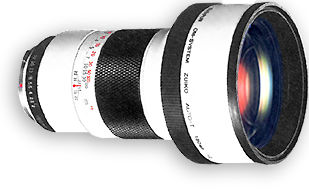 |
One of the fastest lens at this focal length in 35mm SLR photography. It was introduced after Olympus introduced their dual high speed monster Zuiko 250mm f/2.0 EDIF and Zuiko 350f/2.8 EDIF super telephoto lenses. In fact, it was not even made available when the Olympus OM4 was marketed. It has only a white exterior covering version, simulating the popular white lenses of Canon commonly found in sports arenas. |
Combining the best in lens speed and great depth of field control with its extended apertures from f/2.0 to f/22, this lens is a perfect choice for those who often covering sports, news, stage fashion and even portraiture photography. The f/2.0 maximum aperture provides a extra-bright viewfinder image and great for depth of field manipulation A thing to note is, most high speed telephoto lenses such as this type will not present an accurate interpretation of the depth of field's "blur" when a maximum aperture is used, that is caused by the focusing screen and the actual "blur" could be a far greater effect than what you are viewing inside the finder. The extremely shallow depth of field provided by the f/2.0 maximum aperture is good enough to render a full length human figure.
The used of special optical glass of extra-low dispersion properties ensure the chromatic aberration is kept to absolute minimal. In fact, most lenses of this type does not need any indication for infrared index for secondary color spectrum. When used with the 1.4X Tele-converter A, it will convert the 180mm f/2.0 into a 252mm f2.8 super telephoto lens.
¡¡
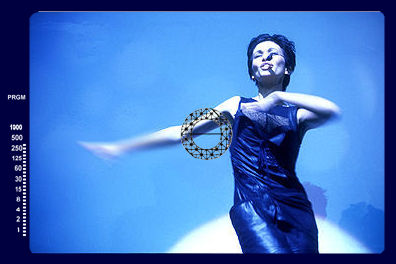 |
Within the normal telephoto lenses below 200mm focal length, this lens is the heaviest among all Zuiko lenses, weighing a massive 1,900g (67oz) yet achieving a remarkable close focus distance of 1.6m (5.2ft) - compares with the equivalent of Canon 2.8kg's FDn 200mm f1.8 L which can only perform a close focus capability of 2.5 m/8.2 ft. |
Showtime...
K
u a l a L u m p u r. Picture
Courtesy of Philip
Chong
¢ç,
Malaysia
Depth
of field can be extremely shallow in indoor available light photography. Low
light may require the use of large aperture and slow shutter speed. Use film
with higher sensitivity is a good solution, or if shutter speeds fall way out
of safe hand holdable level, use artificial illumination such as flash.
Specifications
for Olympus Zuiko 180mm
f/2.0 EDIF
¡¡
 |
Format: 24 x 36mm |
Optical Construction:
10 elements in 8 groups
Angle of View (35mm
format): 14
degrees
Focusing: Internal
Focus mechanism (Rotating cam)
Focusing Distance
Range: 1.6
m/5.2 ft. to infinity
DOF button:
Provided
Lens Case:
provided Tripod
Collar: No
Lens Hood:
Built-in
Infrared Index:
Not
provided (unnecessary)
Filter Diameter/# of
Usable Filters:
100mm front screw-in
Tele-Converter:
1.4X A
length:
174mm
Maximum diameter:
113mm
Weight (grams/lb.,
oz.): 1,900g
(67oz)
Recommended
Focusing Screens: 1:1*,
1:2*,
1:3*,
1:4n*,
1:5#,
1:6#,
1:10*,
1:13*,
1:14* *
Compatible.
Focusing and exposure accuracy remains #
Can be used, they provide accurate focusing but exposure error may
occur
in manual mode for OM1 and OM2 series models.
|
Reserved Sample image 1 |
Reserved Sample image 2 |
Reserved Sample image 3 |
Reserved Sample image 4 |
Reserved Sample image 5 |
¡¡
N O T E: As no photographer in the world would possess ALL the lenses within a single trade name.You are always encouraged to replace these reserved slot for sample images above shooting with a lens type detailed above - just mail in your creative visual, a little caption relative to the background information will help a lot to let other understand how you prepared the shot. Please mention IF you require a complimentary link and where should it be pointed at. Naturally, I DO NOT like to disappoint anyone, but in order to maintain my self-set standard in the PIM website - I would prefer to have high quality input rather than in quantity, if your image is NOT selected for broadcasting in this site, give it a try the next time but I do promise every image will be view and consider carefully. I do appreciate your consideration in this matter.
¡¡
While
not everyone can afford a USD3,000 Zuiko 180mm f2.0 EDIF optic just to take a
few weekend pictures and in fact the price is a quite stressful even for a
full time pro. For those who has a little extra to spare and longing for some
of the best in Olympus: -
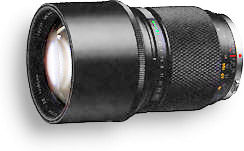 |
Olympus does have another more economical alternative option but with a compromised lens speed of a stop slower at f/2.8 instead of the high speed f/2.0. Not a cheap lens at around USD1,000-00 compared to a more reasonable price tag of USD380-00 10 years ago (It is not a bad idea after all to take a look at used lenses which may be selling at a more sensible figure of around USD250-00). |
Anyway, for that price at new, you might as well check with a third party lenses such as Angenieux which offers a 180mm f/2.3 APO and also a 200mm f/2.8 ED in various popular 35mm SLR mounts *
*
I am not too sure whether they are still producing lenses of such types,
rumors were hot that they have abandon producing lenses for 35mm format. Next
thing to check is, other than see if the two optic mentioned above has an OM
mount.
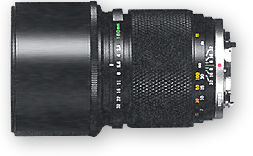 |
Zuiko 180mm f2.8 |
The lens is a practical compromise in terms of lens speed, handling, portability and price. The minimum aperture is f/32 which is useful for stopping down for maximum depth of field and it weighs 700g as compared with the heavy 1.9kg bigger brother of f/2.0. The filter size is an unusual size of 72mm for OM Zuiko lenses (But a popular filter size for faster lenses of other makes and thus, there is no problem of getting third party filter accessories). The focal length and its maximum aperture when used in combination with today's modern high speed film is a good choice for shooting mid distance available light photography. The natural perspective is especially ideal for head and shoulder portraiture without causing any facial distortion. It is a very well made lens with a fine reputation of always producing crisp, sharp and contrasty images and Olympus has two top rated offerings in a popular focal length used among news/reportage photographers and photojournalists.
Specifications:
¡¡
 |
Len type: Zuiko 180mm f/2.8 |
Distance scale: (m)
2.0m (6.6ft) to infinity (OO)
Focusing:
Helicoid
Lens Hood: Built-in
Minimum and Maximum aperture: f/32-f2.8
Tele-Converter:
1.4X A
Diaphragm: Automatic
Filter size: 72mm Screw in
Maximum diameter: 80mm
Length: 125mm
Weight: 700g (17.6 oz) (Older version weighs at 280g (9.8 oz)
Recommended Focusing Screens: 1:1*, 1:2*, 1:3*, 1:4n*, 1:6#, 1:7#, 1:10*, 1:13*, 1:14* * Compatible. Focusing and exposure accuracy remains # Can be used, they provide accurate focusing but exposure error may occur in manual mode for OM1 and OM2 series models.
| Previous | NEXT | Zuiko Lenses in 200mm focal length